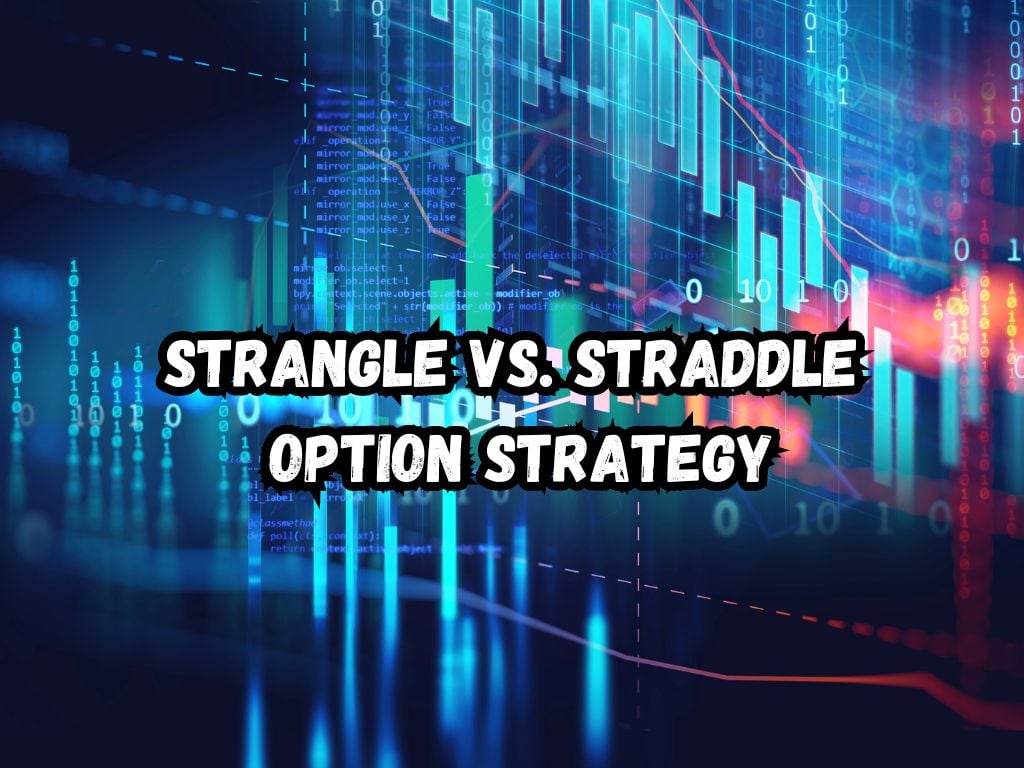Options trading offers fertile ground for investors who thrive on strategic maneuvers. Within this realm, two advanced strategies stand out – the Strangle and the Straddle.
These strategies leverage volatility, allowing traders to navigate through the market’s frequent ebbs and flows.
This article embarks on a detailed journey to elucidate strangle vs straddle option strategy, outlining their unique attributes and ideal conditions for implementation.
Understanding the Straddle Option Strategy
The Straddle Option Strategy is a powerful tool traders harness during times of market uncertainty. It involves purchasing a call and a put option of the same underlying stock, with matching strike prices and expiration dates.
The beauty of this approach lies in its non-directional nature, meaning that it does not bank on specific market trends and is purely volatility-based.
Traders typically employ a Straddle when they expect a significant move in the stock price but are uncertain about the direction. Earnings announcements or product launches often serve as catalysts for such moves.
The strength of a Straddle lies in its ability to capitalize on sharp price movements, regardless if they spike upwards or plummet downwards.

Delving into the Strangle Option Strategy
The Strangle Option Strategy is akin to the Straddle in its pursuit of volatility. However, it diverges in its construction.
A Strangle involves purchasing a call and put option with the same expiration date but different strike prices. The call strike will typically be higher than the stock price, and the put strike will be lower.
This strategy becomes a preferred choice when a trader forecasts a significant price move but suspects that the move may not be strong enough to profit from a Straddle due to its higher cost of entry.
Simply put, a Strangle is a bet on volatility with a lower upfront investment compared to a Straddle.
Strangle vs Straddle Option Strategy: Key Differences
Understanding the contrast between these two strategies is crucial. A Straddle aims for profit from a predicted dramatic price shift without committing to a direction, while a Strangle targets a somewhat similar outcome but with less cost at stake.
The risk and profit potential in a Straddle is higher, since the initial investment is more substantial owing to the at-the-money options employed.
In contrast, the Strangle uses out-of-the-money options, which are cheaper, reducing the initial investment but also requiring a bigger move in the underlying stock’s price to reach break-even.
The trader must be adept at discerning which strategy aligns with their market outlook and risk tolerance.
Real-life Application of Straddle and Strangle
Imagine a company on the eve of a major product unveiling. A trader, unsure if the news will bode well for the stock but certain the market will react, might opt for a Straddle, seeking to benefit regardless of the announcement’s impact.
Conversely, should the trader anticipate a less drastic reaction from the market, a Strangle may prove optimal, maintaining exposure to the event without the hefty price tag of a Straddle.
In both scenarios, adept timing and a finger on the pulse of market sentiment are indispensable.
Successful implementation of these strategies often hinge on striking when market conditions are ripe — just before volatility is anticipated to spike.
Advantages and Limitations of Straddle and Strangle
Each strategy comes with its own set of pros and cons. The Straddle’s advantage lies in the fact that it can turn profitable with any strong price move.
It is unencumbered by the need to take a directional bet. The Strangle, however, shines in its lower cost of entry, making it more accessible yet requiring a more substantial market move for profitability.
That said, these strengths come hand in hand with limitations. The elevated cost of a Straddle can erode profits if the anticipated dramatic price movement fails to materialize.
The Strangle, while less expensive, suffers from a lower probability of success and could result in a total loss of the premium paid if the expected volatility fails to show.

Frequently Asked Questions
What are the primary differences between the Straddle and Strangle option strategies?
The primary differences lie in their strike prices and cost. Straddles use at-the-money options, making them more expensive, while Strangles use out-of-the-money options, making them cheaper but requiring larger price movements for profitability.
Which option strategy should beginner investors start with, Straddle or Strangle?
Beginner investors may find Straddles easier to understand as they involve at-the-money options with the same strike price. However, due to their high cost, beginners should ensure a thorough understanding before utilizing them.
How do market conditions impact the effectiveness of Straddle vs Strangle?
Market conditions heavily influence these strategies. Straddles are preferred in markets expected to experience significant volatility. Strangles are more effective when large movements are foreseen, but at a lower upfront cost.
How risky are Straddle and Strangle strategies compared to other options strategies?
Both strategies involve significant risk as they are based on volatility predictions. Straddles require a substantial move to overcome higher costs, whereas Strangles can lose their entire premium if the expected market move does not occur.
Conclusion
Straddle and Strangle strategies offer advanced traders the means to leverage market volatility. Choosing between a Straddle or Strangle comes down to a trader’s market insight, the anticipated intensity of price movements, and their appetite for risk.
Knowledge of both strategies allows traders to adapt dynamically to the market’s narrative, positioning them to potentially profit from whatever turn the market takes.
By weaving together skillful market analysis with a measured approach to risk, traders can utilize Straddle and Strangle strategies to seek out profit opportunities hidden within the often chaotic folds of market volatility.


 Tags:
Tags:










